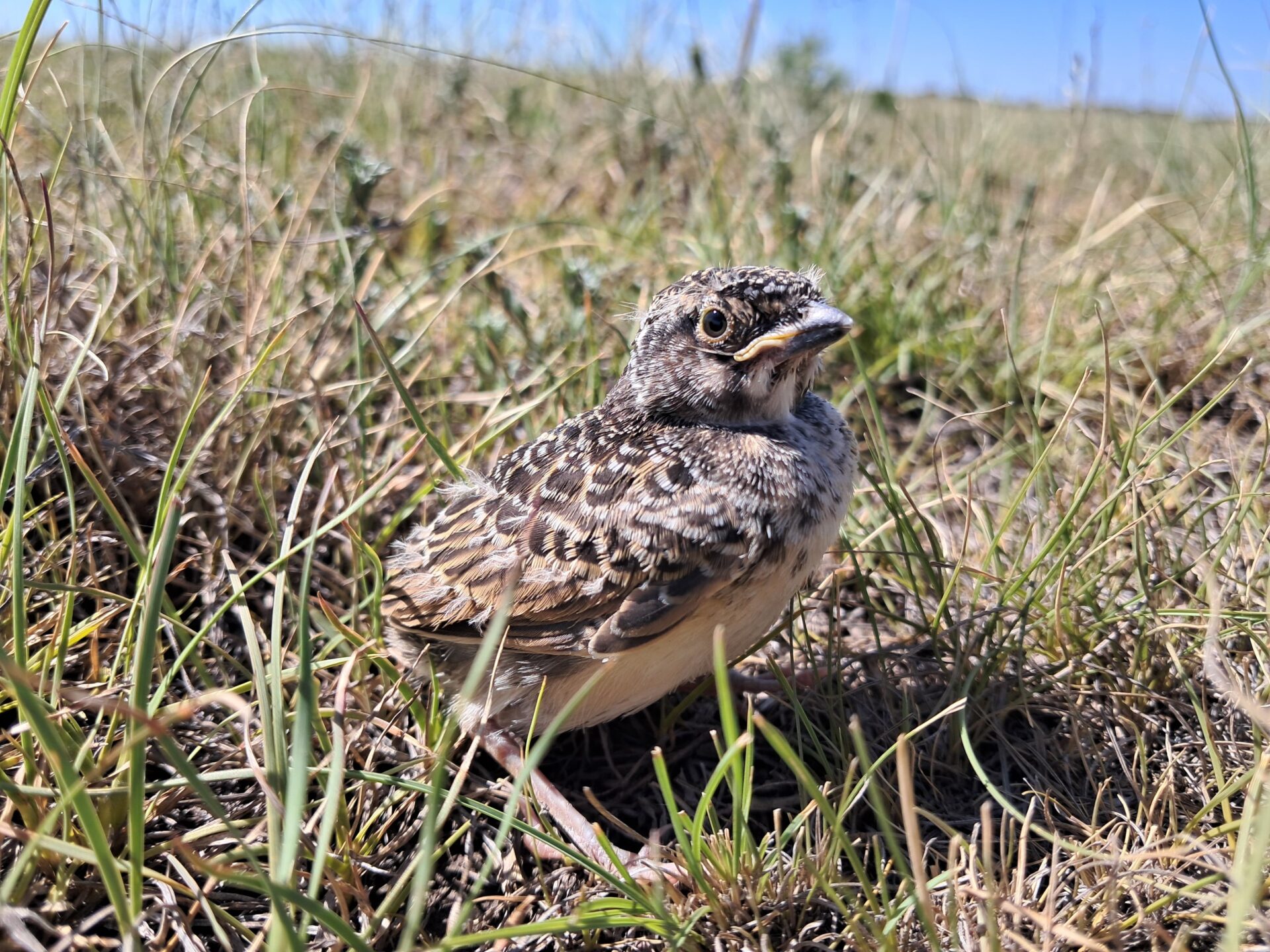A breakthrough discovery has revealed a new population of South Africa’s most endangered bird, the Botha’s Lark, offering fresh hope after 18 months without sightings. BirdLife South Africa and volunteers are racing to protect the species and its fragile grassland habitat.
Gauteng, South Africa (20 November 2025) – Having recently turned my birding gaze to the Lark species, I was very excited to see the news that the Botha’s Lark is seeing some breeding success this year. During a recent trip to Kruger National Park, I identified a Monotonous Lark (it’s actually very far from monotonous, to be honest), which inspired me to search for the LBJs (little brown jobs) in my bird books.
BirdLife South Africa has a great deal to celebrate today! The Botha’s Lark, South Africa’s most endangered bird, has been rediscovered after 18 months. With fewer than 340 individuals thought to be left in the wild, the Botha’s Lark could become the first South African bird on record to go extinct, but recent breakthrough discoveries are giving conservationists hope.
And a little hope is all one needs to get people talking!
The Botha’s Lark, a small, ground-nesting specialist found only in the grasslands of Mpumalanga and the Free State, has become one of the country’s most urgent conservation concerns. For more than a decade, the species has suffered a dramatic population crash. The bird has vanished from nearly all of its historic range.
Its disappearance was so sudden that it was uplisted to Critically Endangered in BirdLife South Africa’s Regional Red Data Book, just one step away from being declared Extinct in the Wild.
In response, BirdLife South Africa assembled a specialised grasslands conservation team dedicated entirely to the species and its fragile home. Their work spans everything from sustainable land management and agricultural partnerships to community outreach and field research.
The search for the species became the first order of business, and conservation biologist Matthew Orolowitz took up the task with the determination of someone who refuses to accept silence as an answer. A Birding Ecotours Fellow of Grasslands Conservation, Orolowitz walked more than 500 kilometres across vast tracts of potential habitat, combing through grasslands where the lark once flourished. For 18 long months, he found nothing.
Then, in the summer of 2024/2025, hope fluttered back.
A small breeding group was finally located. A total of nineteen nests holding two to three eggs each were recorded. Only eight chicks survived to fledge, with the rest lost to predators or unseasonal weather, a stark reminder of just how vulnerable the species remains. Yet after months of empty fields and unanswered questions, even eight tiny fledglings felt monumental.

No other breeding groups appeared for another year, prompting BirdLife South Africa to scale up the search.
More than 40 volunteer birders joined the effort, granted access by farmers, communal land authorities, and land users who opened their fields to help. It became a rare kind of conservation moment, a mix of science, community, and shared determination stretched out across the country’s heartland.
The event delivered 5,644 observations of 227 species, including 31 of conservation concern. But the real headline was: a previously unknown population of Botha’s Lark was found.
A tiny population, but a huge reason to celebrate! It was the kind of breakthrough that lifts a species out of the realm of despair and back into possibility.
The challenge is far from over. As agricultural practices shift and grasslands shrink, the lark is forced to keep searching for the last remaining pockets of suitable habitat.
“Many factors – agricultural expansion, grazing changes, climate variability, and infrastructure development – may be contributing. We must continue working with farmers, communal land users, conservation authorities, and schools to create safe places where the species can survive.” – Matthew Orolowitz
Dr David Ehlers Smith, the organisation’s Science and Spatial Planning Project Manager, echoes this urgency.
“While discovering small breeding populations is encouraging, the reality is dire: only about twenty sightings have been recorded in the past few years. Confirming whether the species persists elsewhere is vital to guiding our research priorities and the lark’s survival prospects.”
Still, the rediscovery has breathed life back into a story many feared was nearing its end. It’s a reminder of what becomes possible when farmers open their gates, when birders lace up their boots, and when conservationists refuse to give up on a species simply because it is small, quiet, and overlooked.
BirdLife South Africa will continue fighting for every bird, but for the Botha’s Lark, the call is especially urgent.
Anyone who lives, works, or wanders in these grasslands could be part of the next breakthrough. Because sometimes all a species needs to survive is a little more space, a little more care, and a few more people willing to look closely at the grass beneath their feet.

